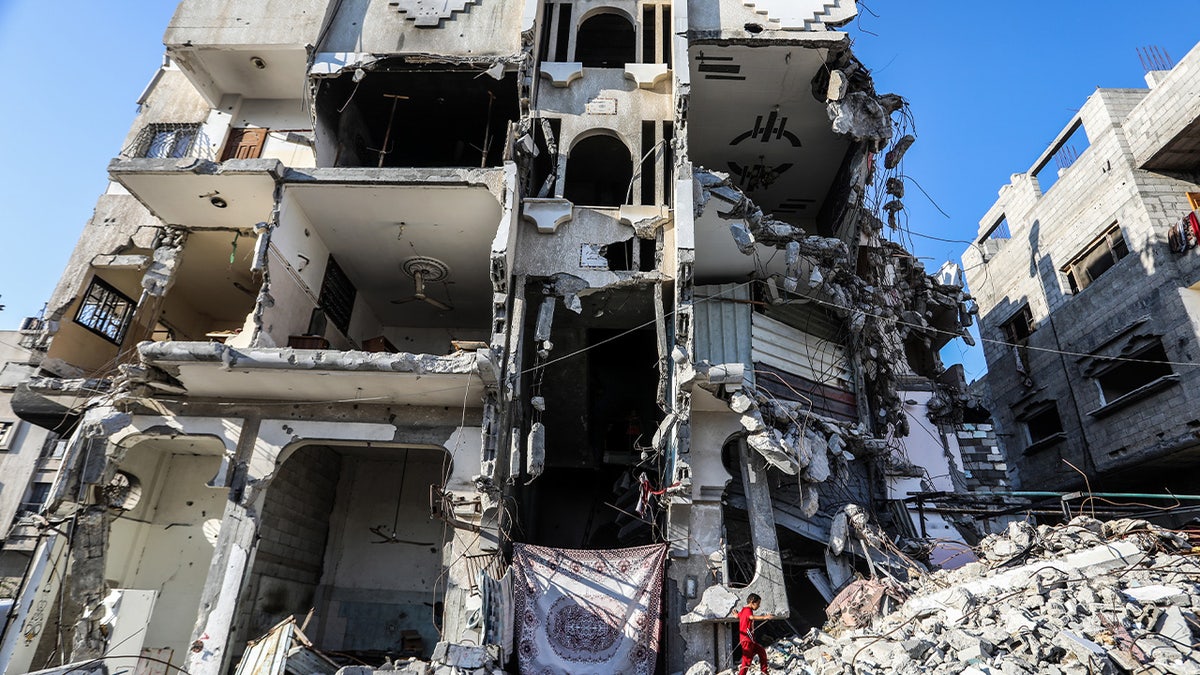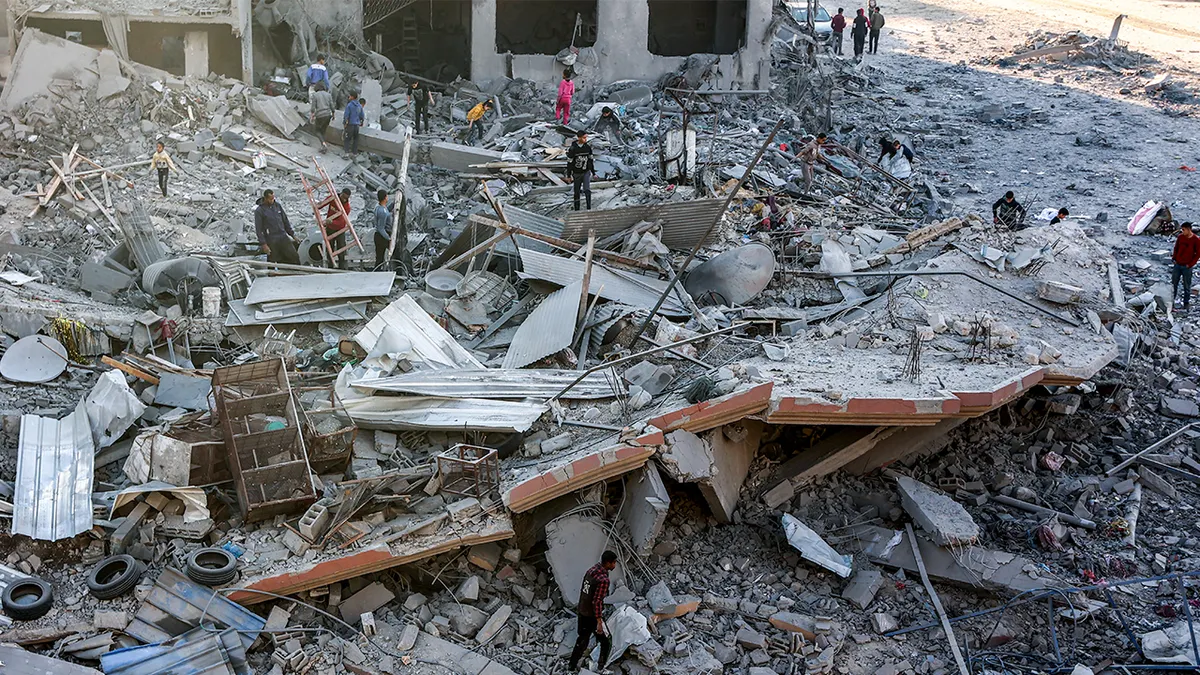INTERNACIONAL
Perú: la Fiscalía pidió 30 años de cárcel para ex candidata presidencial Fujimori por el caso Odebrecht

La fiscalía peruana pidió el martes 30 años y 10 meses de prisión para la excandidata presidencial Keiko Fujimori en el juicio por lavado de activos que enfrenta en el marco del escándalo Odebrecht.
«En total la pena concreta para la acusada Keiko Sofía Fujimori Higuchi solicitada por el Ministerio Público es de 30 años y 10 meses de pena privativa de libertad», expresó el fiscal José Domingo Pérez al exponer el escrito acusatorio.
Fujimori, líder de Fuerza Popular, el principal partido de derecha de Perú por el cual se postuló tres veces a la presidencia, es acusada de recibir dinero ilegal para financiar sus campañas electorales de 2011 y 2016.
La Fiscalía acusa a la hija del expresidente Alberto Fujimori (1990-2000) por lavado de activos y crimen organizado, obstrucción a la justicia, así como declaración falsa en un procedimiento administrativo.
El fiscal también pidió al tribunal que sea inhabilitada para ejercer cargos públicos por 15 años, lo que la dejaría fuera de carrera para las elecciones presidenciales de 2026.
La audiencia fue suspendida por la jueza Juana Caballero hasta el miércoles al cabo de tres horas y media.
Keiko Fujimori, de 49 años, no asistió al tribunal, adonde Pérez llegó usando un chaleco antibalas a diferencia de la audiencia previa en la que había prescindido de él.
Fujimori estuvo dos veces en prisión preventiva, 16 meses en total, imputada de recibir 1,2 millones de dólares ilegalmente del gigante brasileño de la construcción Odebrecht para las campañas de 2011 y 2016. Fujimori siempre proclamó su inocencia.
Aunque en esa época estaban permitidos los aportes a las campañas por parte de empresas extranjeras, el Ministerio Público la procesó por no haber declarado el ingreso de dinero de Odebrecht.
El juicio contra la dirigente y más de 40 coacusados contará con 1.500 testigos y podría tardar más de un año.
La trama del escándalo de corrupción de Odebrecht en Perú salpicó además a cuatro expresidentes del país.
En las afueras del tribunal se apostaron, pacíficamente, una veintena de simpatizantes y opositores de Fujimori.
«¡Keiko a (la cárcel de) Challapalca!», «¡Keiko culpable, el pueblo ya lo sabe!», clamaron a todo pulmón un grupo de mujeres.
A pocos metros, carteles con la inscripción «Fuerza Keiko, estamos contigo», eran exhibidos por un grupo afín.
En el caso está acusado también el ex esposo de Fujimori, el italo estadounidense Mark Vito Villanella, para quien el fiscal pidió 20 años de cárcel. La pareja se divorció en 2023, tras 19 años de matrimonio.
«Este caso no tiene futuro jurídico, va a terminar en una absolución«, aseguró Giulliana Loza, abogada de Fujimori, el 1 de julio cuando se inició el juicio.
La defensa alega que el dinero por el que pretenden sancionar a Fujimori es de origen lícito.
Exjefes de Odebrecht confesaron haber repartido ilegalmente millones de dólares entre políticos peruanos. Eso incluye a Fujimori y a cuatro expresidentes, entre ellos Alan García (1985-1990 y 2006 y 2011), quien se suicidó antes de ser detenido en abril de 2019.
INTERNACIONAL
The history of Gaza amid Trump’s plan to rebuild enclave

In an audacious move that stunned the world, President Donald Trump unveiled a proposal to relocate 1.8 million Palestinians from Gaza, seeking to rebuild their lives in new places. Addressing the media alongside Israeli Prime Minister Benjamin Netanyahu at the White House, Trump outlined his ambitious vision for the Gaza Strip.
«I strongly believe that the Gaza Strip, which has been a symbol of death and destruction … for so many decades—devastating for the people living there and for those anywhere near it—should not go through another cycle of rebuilding and occupation by the same people who have fought, lived, died, and suffered in that place.»
The president emphasized the importance of learning from history. «History, you know, just can’t keep repeating itself,» Trump remarked, urging a departure from the failed approaches of the past.
‘LEVEL IT’: TRUMP SAYS US WILL ‘TAKE OVER’ GAZA STRIP, REBUILD IT TO STABILIZE MIDDLE EAST
President Donald Trump, right, and Israeli Prime Minister Benjamin Netanyahu answer questions during a joint press conference in the East Room at the White House in Washington, D.C., on Feb. 4, 2025. ( REUTERS/Leah Millis)
«Dating back nearly 4,000 years, since the time of the Patriarchs Abraham & Isaac, to the time of the mighty Biblical Judge Samson and the Philistines; from the rule of Solomon and the kings of the Davidic Dynasty, and for millenia onward; the territory of modern-day Gaza has been a place of both conflict and hope, trading hands from one ruler to another, with the potential for prosperity just over the horizon, but aside from brief periods, peace for her inhabitants and neighbors remained elusive,» Ze’ev Orenstein, the director of international affairs for the City of David Foundation in Jerusalem, told Fox News Digital
The history of Gaza that Trump was referring to is both a long and tumultuous one.
Biblical Roots: A Battleground for Civilizations
Gaza’s history dates back nearly 4,000 years, frequently appearing in biblical narratives. It was one of the five key cities of the Philistines, who arrived from the Aegean, known for their clashes with the Israelites. The story of Samson, who tore down a Philistine temple, is one of the earliest recorded tales of destruction and rebuilding in Gaza. Over centuries, it was conquered by the Egyptians, Babylonians and Persians, each bringing new rulers and forcing population shifts. Even then, Gaza was a land where people came and went, often not by choice.
Ottoman Rule: A Strategic Military Outpost
Under the Ottoman Empire (1517–1917), Gaza was a military stronghold. The Ottomans used it as a buffer zone, and while some periods saw growth, it was frequently abandoned during wars. In 1799, Napoleon’s forces briefly occupied it before retreating. Once again, Gaza was left in ruins, and its population had to start over.
TRUMP EYES ABRAHAM ACCORDS EXPANSION, GAZA REBUILD WITH NETANYAHU MEETING ON DECK

A view of destroyed buildings caused by Israeli attacks comes to surface following the withdrawal of the Israeli army in Khan Yunis, Gaza, on Sept. 29, 2024. (Abed Rahim Khatib/Anadolu via Getty Images)
The British Mandate and the First Exodus
When the British took control in 1917, Gaza became part of the British Mandate for Palestine. Tensions between Jews and Arabs escalated, leading to violent clashes. By 1948, when Israel declared independence, thousands of Palestinian refugees fled to Gaza, turning it into an overcrowded enclave under Egyptian rule.
Egyptian Rule: No Citizenship, No Stability
From 1949 to 1967, Egypt controlled Gaza but never integrated it. Palestinians living there were not granted Egyptian citizenship, and Gaza remained impoverished and politically unstable. When Israel captured it in the Six-Day War, the cycle of displacement and destruction resumed.

People inspect the debris and rubble at the site of Israeli bombardment on a residential block in Jalaa Street in Gaza City on Jan. 14, 2025 amid the ongoing war in the Palestinian territory between Israel and Hamas. (OMAR AL-QATTAA/AFP via Getty Images)
Israeli Rule: Settlements and Economic Integration
After Israel took over Gaza in the Six-Day War in 1967, Jewish settlements were built within the coastal enclave, creating economic interactions between the two peoples – but also increasing the level of tension.
Amir Tibon, himself a survivor of the October 7 attack, describes in his book «The Gates of Gaza,» Palestinians found out what life looked like for their Israeli neighbors, who enjoyed a significantly higher standard of living. Soon, hundreds of thousands of Gazans would enter Israel daily for work, and Gaza’s economy became tied to Israel’s, but hostility persisted. In the 1980s, the Islamist organization Hamas became a rising force among Palestinians in Gaza, eventually succeeding in taking over the enclave and turning it into a fortress of terror.
‘PEACE THROUGH STRENGTH’: TRUMP AND NETANYAHU EXPECTED TO DISCUSS IRAN, HAMAS AT WHITE HOUSE MEETING
The Palestinian Authority’s Short-Lived Rule
After the Oslo Accords, the Palestinian Authority (PA) took administrative control of Gaza in the 1990s. For the first time, there was hope for Palestinian self-rule, but corruption and internal strife plagued the PA’s governance. During the Second Intifada (2000–2005), terrorist attacks from Gaza escalated, leading to Israeli military operations that devastated the region once again.

Members of the Hamas terror group gather in Gaza in preparation for the release of four female hostages as part of the ceasefire deal with Israel. (TPS-IL)
Hamas: Ruling by Force, Trapping Its People
In 2005, Israel withdrew from Gaza, removing all settlements. In 2007, elections were held, and Hamas took control, ousting the PA. Since then, Hamas has engaged in repeated attacks on Israel, leading to destruction and humanitarian crises. With Hamas prioritizing terrorism over governance, Gaza has remained in a state of war and siege. Today, it is one of the most densely populated places in the world, with 2 million residents.
Richard Goldberg, a senior adviser at the Foundation for Defense of Democracies, told Fox News Digital, «Israel withdrew unilaterally 20 years ago. Egypt wants nothing to do with Gaza. Hamas is a terrorist group, not a government. Gaza is no man’s land, with 2 million people used as political pawns instead of human beings.»
CLICK HERE TO GET THE FOX NEWS APP
A Land That Has Always Been Rebuilt
Trump’s idea of relocating Gaza’s population and rebuilding new communities echoes patterns from the past. Whether it was the Philistines, Ottomans, the British, or Egyptians, Gaza has frequently seen its population displaced, only to return or be reshaped under new rulers. While today’s political realities make mass relocation unlikely, history shows that radical shifts in Gaza’s demography are not unprecedented.
-
SOCIEDAD3 días ago
Conurbano salvaje. Hallaron muertos debajo de un puente a dos adolescentes que habían desaparecido el jueves
-
POLITICA2 días ago
Ola de calor: casi 50.000 usuarios se quedaron sin luz en el AMBA y hubo apagones en el interior
-
POLITICA2 días ago
Guillermo Francos cargó contra Kicillof tras el doble crimen de Florencio Varela: «La Provincia está incendiada por la inseguridad»
-
POLITICA22 horas ago
«Lanus en la oscuridad: Cortes de luz eternos y gestión cuestionada de Julián Álvarez»
-
POLITICA22 horas ago
El Gobierno denunció a Cristina Kirchner por cobrar en sus jubilaciones el plus por zona austral mientras reside en la Ciudad
-
POLITICA10 horas ago
José Luis Espert, polémico sobre la inseguridad: «A los chorros hay que llenarlos de agujeros y colgarlos en una plaza pública»





























